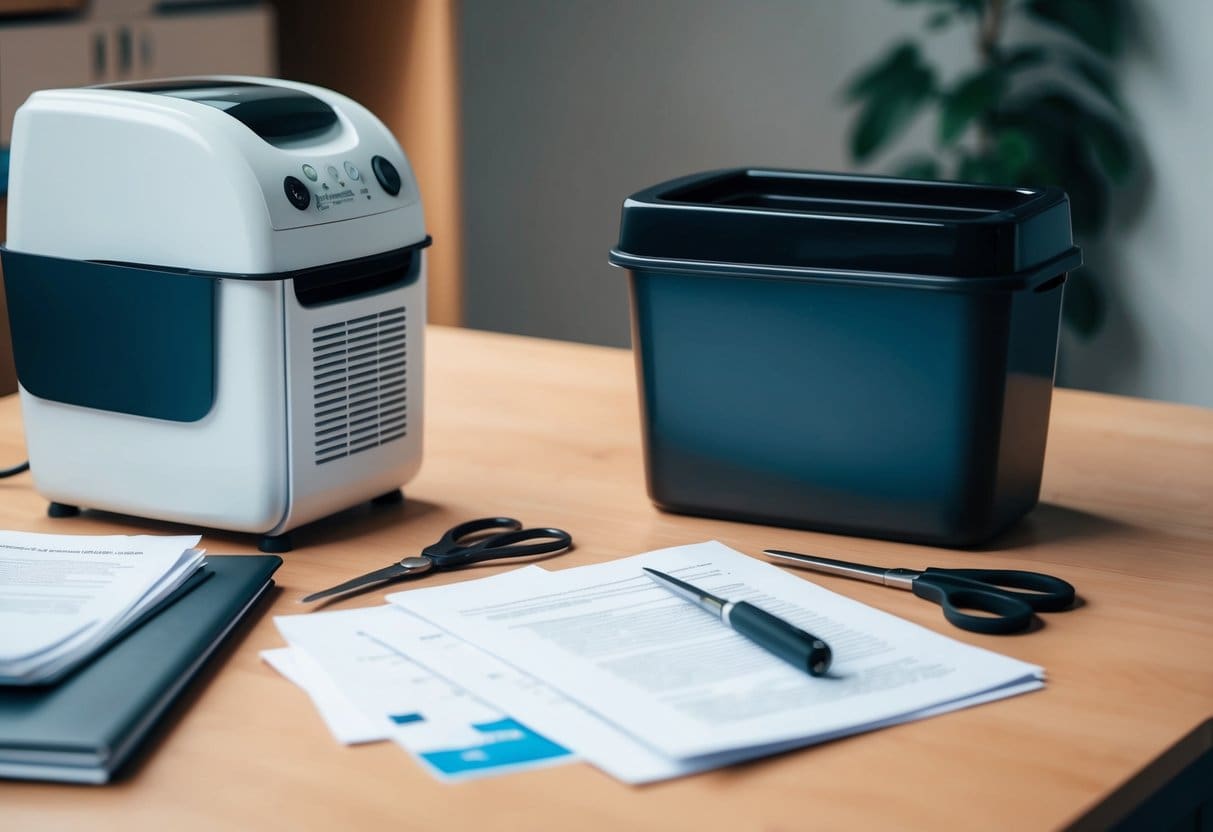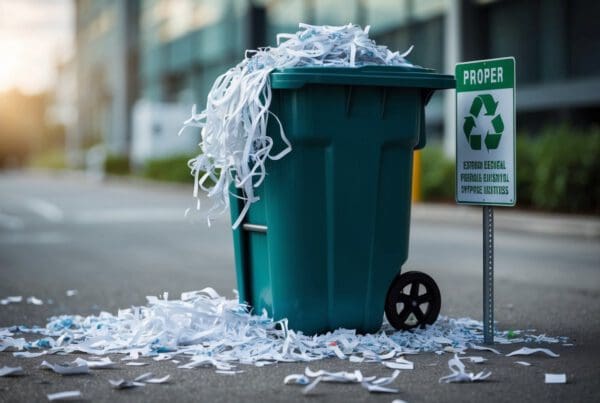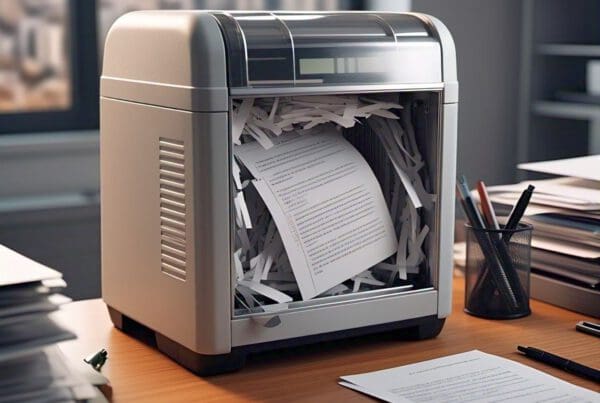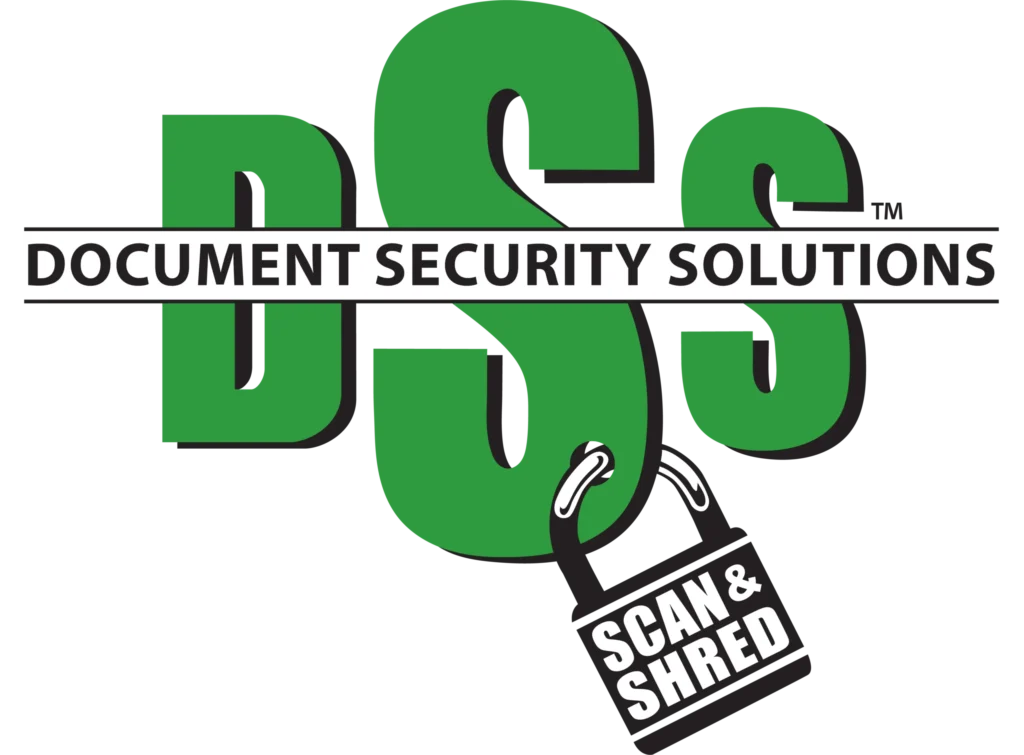Understanding Document Shredding

Document shredding is crucial for maintaining privacy and protection. Recognizing what information is sensitive and ensuring its proper destruction helps guard against identity theft and data breaches.
The Importance of Data Protection
In our digital age, data protection is more important than ever. Personal information is at risk if not disposed of properly. When we throw away documents without shredding, we expose ourselves to identity theft. Thieves can find bank statements, credit card offers, and other sensitive papers.
By using a shredder, we reduce this risk. It’s a simple yet effective way to keep our information private. Shredding ensures that documents are destroyed beyond recovery. Securely disposing of paper documents helps us maintain control over our personal data.
Identifying Confidential Information
Not all documents are equally sensitive. We need to identify which papers contain confidential information. These documents often include social security numbers, addresses, or financial details. Bank statements, medical records, and tax documents are some examples.
Even seemingly harmless papers, like junk mail with our address, can be risky. It’s crucial that we shred any item with personal or confidential details. This helps protect our identity and reduces the chances of data being misused. Shredding ensures that private information stays private and doesn’t end up in the wrong hands.
Choosing the Right Paper Shredder

Selecting the right paper shredder is essential for maintaining the confidentiality of our documents. We must consider the type of shredder, security level, and features that ensure safe operation.
Types of Shredders: Strip-Cut, Crosscut, and Micro-Cut
When picking a shredder, the type we choose matters. Strip-cut shredders are basic, cutting paper into long strips. They are less secure but work well for non-confidential documents.
Crosscut shredders offer better security by slicing paper into small pieces. This option balances security and speed, making it a popular choice.
For the highest security, micro-cut shredders cut paper into tiny particles, ideal for highly sensitive information. They provide peace of mind knowing our documents are thoroughly destroyed.
Security Levels: Understanding P-4 Security Level
Security levels in shredders range from P-1 to P-7. For home use, a P-4 security level is ideal. P-4 offers a good balance of security and efficiency, suitable for most confidential documents.
This level shreds paper into pieces small enough to prevent information retrieval. It’s considered safe for personal data, protecting against identity theft.
By choosing a shredder with P-4 security, we ensure our confidential information is safeguarded without sacrificing speed.
Shredder Features for Safe Operation
Modern shredders come with features that promote safe operation. Overheat protection is crucial, preventing damage from extended use. This feature shuts off the shredder if it gets too hot.
Quiet operation is also important, especially in home environments. A quiet shredder lets us maintain a peaceful setting while handling documents.
Many shredders now include safety locks to prevent accidental operation. These features combined make shredding not only secure but also user-friendly.
When we consider these elements, we can confidently select a shredder that matches our needs for safety and efficiency.
Home Office Shredding Strategies

Creating an efficient home office requires smart strategies for handling paper. Proper shredding methods help ensure safe document disposal and keep our workspaces organized.
Efficient Document Management at Home
In our home offices, managing documents well is key. We can start by sorting important and unimportant papers. It’s helpful to have separate bins for each. Next, we should prioritize documents for shredding that contain sensitive information like bank details or personal IDs.
A shredding schedule can prevent piles of paper from building up. By setting a regular time each week for shredding, we keep our document management on track. This routine helps maintain a clutter-free workspace and reduces stress from unnecessary clutter.
Choosing the right shredder is also important. We should look for a model that suits our needs, whether we need high-capacity shredding or basic security features. Cross-cut or micro-cut shredders offer better security for personal and financial information.
Incorporating Shredding into Routine Cleanup
Including shredding in our regular cleanup sessions makes a big difference. As we tidy our desks, we can gather outdated or unnecessary papers for shredding. This ongoing practice keeps our workspace neat and protects confidential information.
For larger home offices, consider assigning shredding tasks to each family member. This shared responsibility ensures everyone is involved in proper document disposal. It’s also a good idea to keep the shredder in a central location to encourage frequent use.
Additionally, recycling shredded paper not only contributes to a cleaner home but is environmentally friendly. Many recycling centers accept shredded paper. By integrating shredding into our cleaning routine, we improve our document disposal habits and keep our home offices tidy and efficient.
Professional Shredding Services
When it comes to paper shredding, there are times when using professional services is the best choice. These services offer secure disposal and expertise to handle documents safely.
When to Opt for Professional Services
We should consider professional shredding services when dealing with a large volume of documents. Managing a significant quantity of sensitive information can be overwhelming and time-consuming at home. Professionals have the tools and capacity to handle bigger loads efficiently.
For documents that contain highly sensitive information, like financial or legal papers, professional services provide an added layer of security. They ensure that our confidential data doesn’t fall into the wrong hands.
Whenever we need to comply with legal or industry regulations for secure document destruction, professional services can help. They are familiar with the laws and best practices to safely destroy sensitive information. This way, we are assured that we meet all compliance requirements.
Secure Document Destruction Companies
Secure document destruction companies, like Shred-it, specialize in safe paper disposal. They use industrial-grade shredders that make it extremely difficult for anyone to piece the documents back together. This level of destruction offers us peace of mind.
We often get the option of on-site or off-site shredding. On-site shredding means they come to our location, offering full transparency. Off-site involves transporting documents to their facility for shredding. Both methods are secure but choosing depends on our preference for direct oversight.
Many companies also provide regular shredding schedules, making it easy to routinely manage document disposal needs. This service is particularly useful for businesses with recurring disposal needs, ensuring that sensitive documents never accumulate.
Post-Shredding Measures
After shredding documents at home, we need to handle the shredded paper responsibly. Proper disposal of shredded paper ensures safety and efficiency, while keeping the environment in mind.
Proper Ways to Dispose of Shredded Paper
One way to dispose of shredded paper is to recycle it. Many communities have dedicated recycling bins for paper, which is an environmentally friendly choice. Check with local waste management for guidelines, as some only accept shredded paper if bagged separately.
Another option is to use shredded paper at home. It can be utilized as packing material or in compost piles. The compact design of shredded paper makes it versatile for these purposes. Additionally, it can be used for pet bedding, especially for small animals like hamsters or guinea pigs, providing a soft and absorbent material.
For those aiming to reduce waste, incorporating shredded paper into garden mulch is effective. It helps retain moisture in soil and prevents weed growth. By exploring these methods, we can ensure our shredding needs are met while remaining mindful of the environment.





